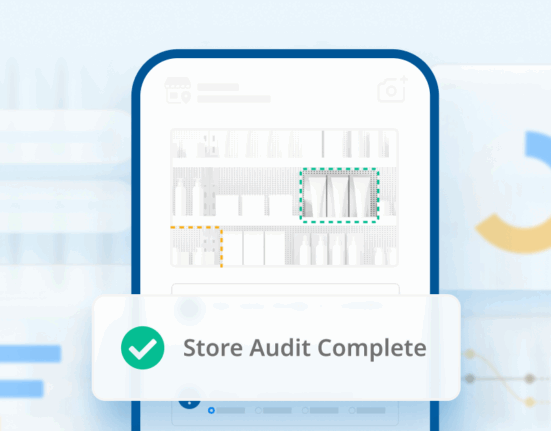The key to having a successful business is having the right products in the right place, at the right price, at the right time. The 4 P’s; product, placement, price, and promotions are basic components of a marketing plan. When successfully integrated, the four elements all work towards the same goals, sharing the same message in a seamless relationship.
In a retail setting, marketing and merchandising teams decide on the 4 P’s. Marketing typically owns all aspects of customer acquisition, such as driving brand awareness, customer loyalty and retention, and increasing traffic. On the other hand, merchandising handles the product strategy, such as category and brand-level planning, managing in-season pricing and promotional activities, and cross-channel inventory management. It is especially crucial for these two teams to have a single source of truth to work with the same information; this will result in better informed and aligned strategic decisions and help integrate workflows effectively.

Regardless of the need to be aligned, less than 50% of retailers involve marketing in their merchandising strategy and vice-versa. Unfortunately, poor communication between marketing and merchandising leads to misaligned product and advertising strategies which can often result in under-performance. For example, if the marketing team is investing a disproportionate amount of advertising spend on items at too low of a price point, the merchandising team may not be prepared for the surge in demand, which can lead to stock outs and lost sales. But when effectively integrated, together the team can drive higher revenue and margins, raise conversion rates, improve inventory turns, and drive customer loyalty.
Assortment
The 4 P’s start with the right products available for the consumer to purchase. Product assortment consists of breadth, length, depth, and the consistency of products held in the store. Choosing the best assortment is a balancing act because any single change can have a wave of effects. Optimizing product assortment to meet customer demands with the perfect product mix will maximize market share and profits.
Competitive intelligence is important to use in benchmarking to identify assortment gaps across product categories. Finding whitespaces in your assortment provides the opportunity to meet unmet demand and drive more sales when they are filled. Competitive intelligence can be useful to help you stay on top of trending categories and brands to better predict demand for successful planning and forecasting, particularly for seasonal products. Mix this with your own historical sales data and what performed well in the past to generate a powerful merchandise forecast that will drive optimized product assortments and the marketing to support them.
Consolidating assortment insights in a common data model between merchandising and marketing allows retailers to craft an integrated data-driven strategy across both teams. Not only does this allow retailers to stay on top of trends and better serve their customers with the products they want, but also drives more effective marketing spend by focusing on the right products.
Pricing
Now that you have a great mix of products, they need to be priced appropriately. You want to make sure the price point is what consumers are willing to pay, while providing value and upholding the brand’s name. An optimal price point will create a compelling value against the competition and increase a customer’s satisfaction.

Like assortment, competitive analysis is important here. It is important to stay on top of any changes occurring in the market to identify trends or opportunities early, as well as react to any threats in a timely manner. Pricing intelligence can help identify competitive pricing trends and even discounting behavior over time. Similar to how assortment intelligence can help you identify whitespaces, competitive pricing intelligence can do the same. Let’s say that none of your key competitors are selling coffee makers in the $50 to $75 pricing tier – that is an underserved market. Finding whitespaces using pricing intelligence could be an opportunity to fill a gap from an assortment perspective.
Ensuring that you have a scalable way to collect, analyze, and act on pricing data across merchandising and marketing allows you not only identify pricing whitespaces, but also find the sweet spots for product pricing. Married with your historical sales data, you can better predict demand, estimate price elasticity, and present the best pricing to be advertised, ultimately resulting in better conversions and return on marketing spend.
Discounting and Promotions
It is crucial for the merchandising and marketing team to work together throughout a product’s life cycle. Any miscommunication around promotions on low stock items, or unnecessary discounts will have a negative impact on your business. Optimizing timing and type of markdowns or promotions is important to get inventory moving without killing profits.
Promotions by definition will reduce your margins, but there are definitely ways to maximize the ROI of your promotions. A successful promotion will not only make customers happier and increase the likelihood of them returning, but they have the potential to increase brand awareness, and increase customer traffic. For example, by taking a slight cut on margins on women’s jeans, retailers have the potential to gain loyal female customers, who are likely to buy and spend more on their next purchase.

It’s helpful to take a look at the market and analyze where competitors are focusing their discounting and spot markdown patterns to help inform your own promotional strategy. One application of discounting analytics is that it can uncover when competitors begin to clear aging inventory, helping you identify areas where you can maximize full price sales. You may even find that you are leaving money on the table by over-discounting when a smaller discount would yield the same conversions.
To maximize the ROI on promotions, promotional analytics can shed light on customer behavior, allowing you to serve ads that resonate better with your customers. Past performance is a good indicator of future behavior. Analyze the look and feel of past promotions (your own and those of competitors), the types of promotions, and the media through which they were presented, and couple that with sales performance data across your key categories. This can ensure you deliver only the most compelling promotions, on the right channels, at the right time, to boost your sales, maximize inventory turns and profits, all while keeping your customers satisfied.
Communication between marketing and merchandising is especially crucial when in comes to promotions and discounting. Actions need to be well coordinated between the teams since you need to keep your inventory levels in mind, but incorporating competitive market data can help optimize strategies to get even more impactful results.
Conclusion
Successful retail businesses have their strategies across product, placement, price, and promotions successfully integrated. To deliver a unified message and maximize sales performance, marketing and merchandising teams need to make well informed strategic decisions collaboratively.
Wiser delivers powerful retail intelligence, automation, and analytics to optimize assortment, promotions, and pricing. With the technology to facilitate a seamless relationship between different teams and departments, Wiser’s single source of reliable data and actionable insights allows retailers to optimize decision making across teams.
Contributing writer: Patricia Montenegro









